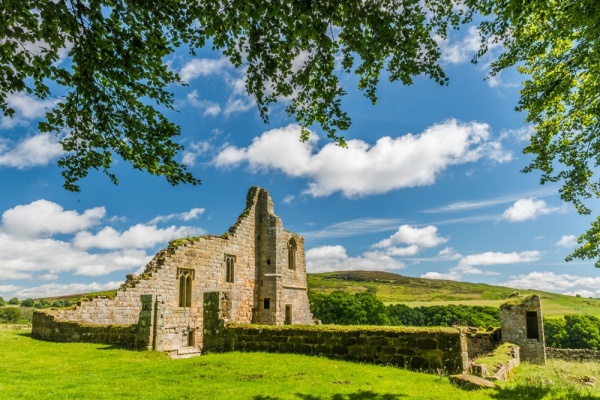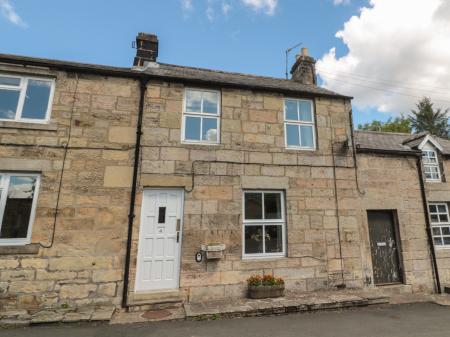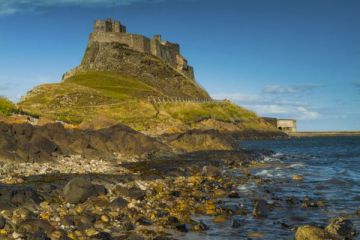
In 1422 John Cartington was granted a license to crenellate. It was probably this same John Cartington who extended the buildings to include a great hall and courtyard.
The castle was held by royalist troops in the Civil War, and as a result, it was besieged by Parliament in 1648. The castle defenders held out only briefly, and the castle was then slighted by Parliament to make it unusable for defence. The tower house was last occupied in the middle of the 19th century.
The castle was restored by Lord Armstrong in 1867. During the restoration, a small 15th-century wooden cross was discovered, along with coins from the reigns of Charles II and George I. Several small carvings were also found in the area of the castle chapel.
The castle ruins are quite extensive and show that the original fortification was a walled enclosure with a tower at each corner. This early layout seems to have been interrupted before it could be finished, and the north-east turret was replaced by a fortified tower house. This tower house formed the core of the medieval castle, though it was extended in the 15th century.
The castle stands on the northern end of a ridge. The ridge slopes down to the Spout Burn on the east side and to the River Coquet on the south and west.

The eastern side of the castle site is a small rectangular courtyard. There are turrets at the north-east and south-east corners. The northern turret is only partially complete but the southern turret still stands and includes a garderobe. At the south-west corner stand the ruins of a tower destroyed in the Civil War siege.
The northern side of the courtyard is occupied by a complex of buildings, mostly in a ruinous state. Here is a 14th-century tower, a great hall and secondary chambers. You can see where large windows were inserted into the great hall during the Tudor period. At the south-west corner are the remains of a stair turret.
You can see evidence of a terrace enclosure and the remains of a garden enclosure for the tower house.
Visiting
Cartington Castle is on private land, though it is easily visible from surrounding properties and from the road through the village. There are no signs and no indication that visitors are welcome. There is also no obvious place to park. I managed to pull off onto the verge and rather tentatively walked up the drive to Cartington Farm, hoping to find a welcome sign pointing to the castle.
As I hovered near a gateway leading to the field containing the castle someone at the neighbouring property noticed me, gave a friendly wave, and told me to go ahead. So unless I just got lucky it seems that there is public access to the castle site, but do be respectful of the farm and take care to close gates behind you.








 We've 'tagged' this attraction information to help you find related historic attractions and learn more about major time periods mentioned.
We've 'tagged' this attraction information to help you find related historic attractions and learn more about major time periods mentioned.


